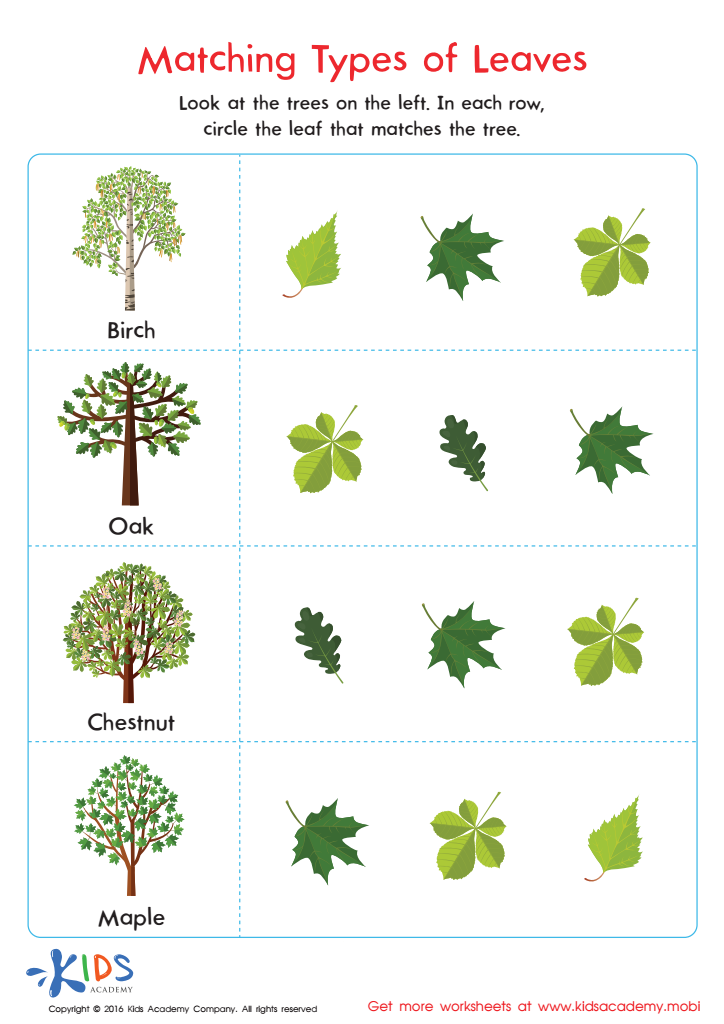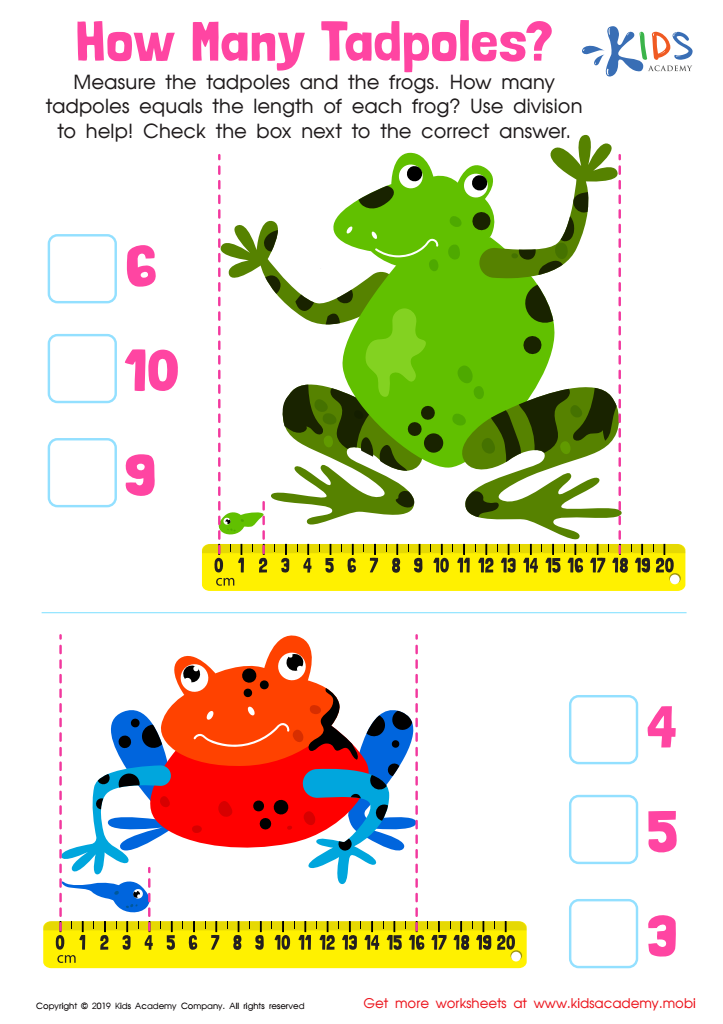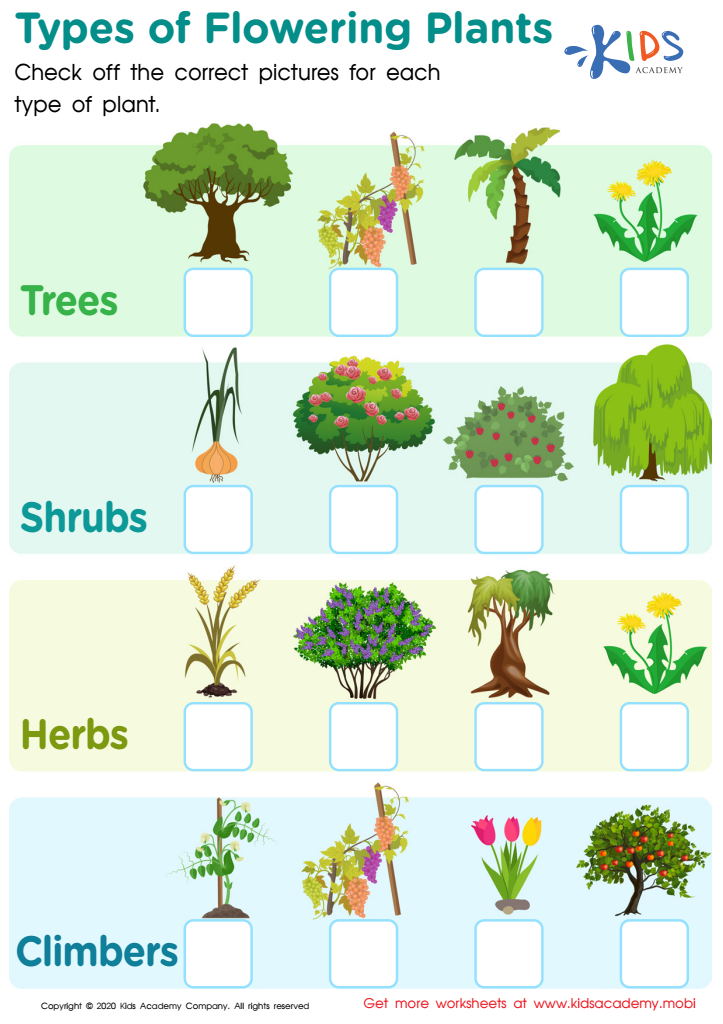Observation skills Normal Plants and Animals Worksheets for Ages 6-8
3 filtered results
-
From - To
Boost your child's scientific curiosity with our "Observation Skills: Normal Plants and Animals" worksheets for ages 6-8 from Kids Academy! These printable activities are designed to develop keen observational abilities and enhance learning about the natural world. Engaging, fun, and educational, our worksheets help young learners easily identify and describe the characteristics of plants and animals. Ideal for homeschooling or classroom settings, these resources encourage hands-on discovery and critical thinking. Cultivate a budding scientist's inquisitiveness as they explore nature's wonders, instilling a lifetime love for learning and observation. Start today and make science captivating!


Matching Types of Leaves Printable


How Many Tadpoles Worksheet


Types of Flowering Plants Worksheet
Observation skills are fundamental for children's learning and development, particularly between the ages of 6 and 8. At this stage, fostering curiosity and encouraging exploration are crucial for cognitive growth. When children observe normal plants and animals, they engage their senses and enhance their attention to detail. This early exposure promotes a better understanding of the natural world, laying the foundation for scientific thinking.
Parents and teachers should prioritize these observational skills to nurture a child’s innate curiosity. These skills help develop critical thinking as children learn to ask questions, make predictions, and draw conclusions based on their observations. Observing plants and animals enriches their vocabulary and comprehension, introducing them to concepts like ecosystems, life cycles, and biodiversity.
Moreover, time spent observing nature fosters patience and concentration, essential life skills that aid in overall academic performance. For instance, closely watching a growing plant or an animal in its habitat teaches cause and effect, enhancing problem-solving abilities. It also encourages mindfulness and appreciation for the environment, cultivating a sense of responsibility toward nature.
In essence, nurturing observation skills through the study of plants and animals provides a holistic approach to learning, laying the groundwork for a lifelong passion for inquiry and a deeper connection with the natural world.
 Assign to My Students
Assign to My Students














